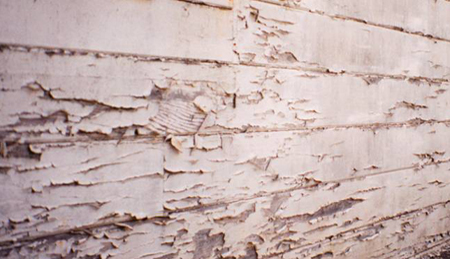
LEAD IN CONSTRUCTION
LOHP developed a three-day training course for the California Department of Public Health (CDPH) Childhood Lead Poisoning Prevention Branch (CLPPB) that is now being used throughout the state of California to train and certify construction workers who work with lead. All workers conducting lead-related construction work in California must be trained by one of CDPH’s accredited training providers, most of which use LOHP’s curriculum, “Working Lead-Safe.” This curriculum emphasizes the use of hands-on, participatory activities to teach workers about occupational lead exposure, symptoms of lead poisoning, how to abate lead hazards, how to use respirators, and what other precautions to take to prevent lead exposure. LOHP also conducted a one-day Training-of-Trainers course for CDPH’s accredited training providers to prepare them to teach the “Working Lead-Safe” course.
RESOURCES FOR SCHOOL MAINTENANCE STAFF
LOHP’s Lead-Safe Schools Project offers publications and other resources for California school districts and school maintenance staff. There is lead in most California schools, especially in paint, and it can be a serious hazard for both workers and children.
Until mid-2004, we presented free “training of trainers” sessions for representatives from each California school district. Local trainers then used our Lead-Safe Schools Curriculum to conduct workshops for maintenance workers in their districts.
IS THERE LEAD IN CALIFORNIA SCHOOLS?
Yes. It has been known for a long time that many children are exposed to lead at home. But new evidence shows that they may also get exposed at school. A recent study by the California Department of Health Services found that there is lead in most elementary schools in the state.
Lead is found in the paint in nearly 96% of school buildings, even some newer buildings. There is also lead in some drinking water, and in the soil near older school buildings.
The Lead-Safe Schools Project can help California elementary schools and schools with childcare centers create a safer school environment for children and staff.
WHO IS AT RISK?
Lead poisoning is the most common environmental health problem affecting young children. The most vulnerable children in schools are those in second grade and below.
School maintenance workers also may be exposed if precautions aren’t taken to control lead dust. They can even expose their families if lead dust travels home on their clothes.
Lead damages the brain, nervous system, and kidneys. Poisoning can occur gradually, and there are often no obvious symptoms. Even at low levels, lead can cause learning difficulties, behavior problems, and lower IQs in children.
HOW CAN SCHOOLS PROTECT CHILDREN AND STAFF?
Lead poisoning is preventable if lead-safe policies and procedures are followed. School districts should:
- Evaluate lead hazards in paint, soil, and water. Lead paint is usually not a hazard if it is in good condition. However, lead dust may be created when surfaces are damaged or prepared for repainting.
- Assume surfaces that have been painted prior to 1992 have lead paint, and follow recommended lead-safe work practices.
- Give first priority to young childrens’ classrooms and play areas.
- Make sure custodians and maintenance staff are properly trained in lead-safe work practices.
- Provide staff with the tools and equipment they need to work safely.
- Never allow parents, other volunteers, or untrained staff to perform any task that might disturb lead.
- Prohibit tasks that create uncontrolled lead dust or chips (for example, sanding, burning, dry scraping, or water blasting).
- Allow high risk lead projects, and abatement projects designed to reduce lead hazards for a minimum of 20 years, to be done only by staff or contractors who are certified by the California Department of Health Services.
LOHP’s Lead Safe Schools Project is a joint effort of U.C. Berkeley’s Labor Occupational Health Program, the Childhood Lead Poisoning Prevention Branch of the California Department of Health Services, and the California Department of Education.
RELATED ARTICLES
FOR MORE INFORMATION
Lead-Safe Schools hotline
(888) 873-LEAD



